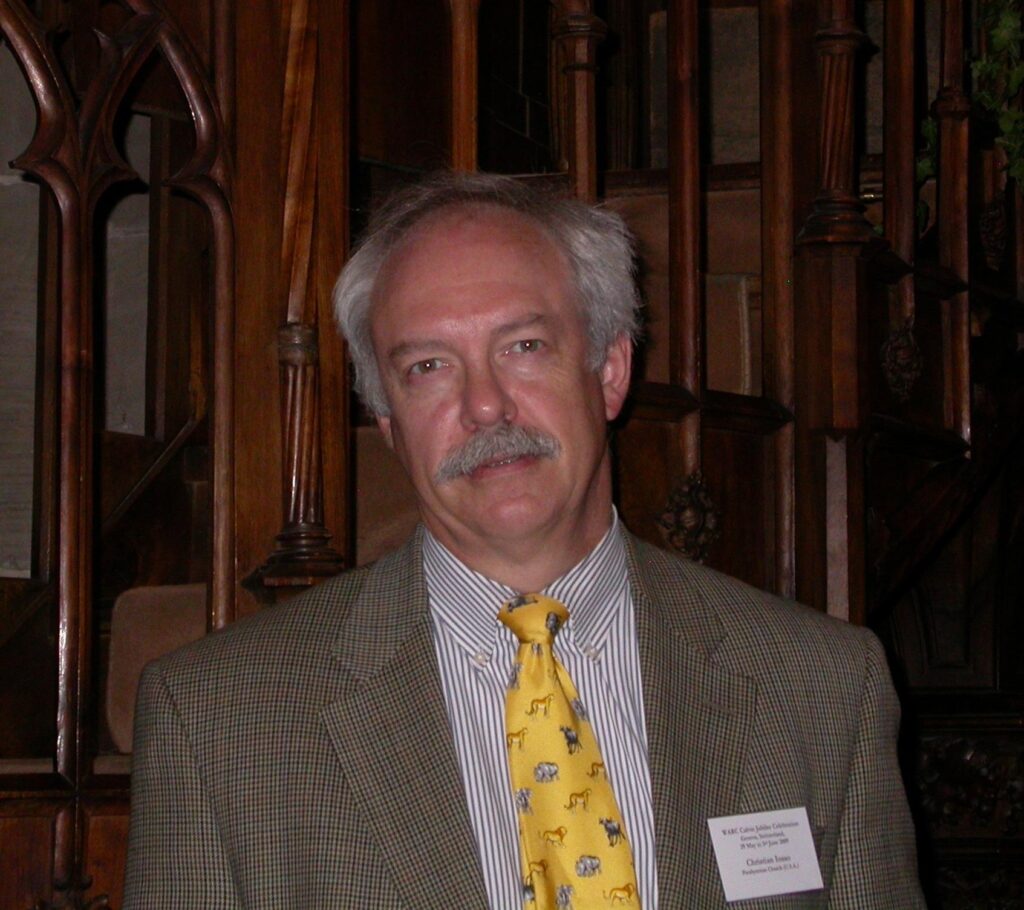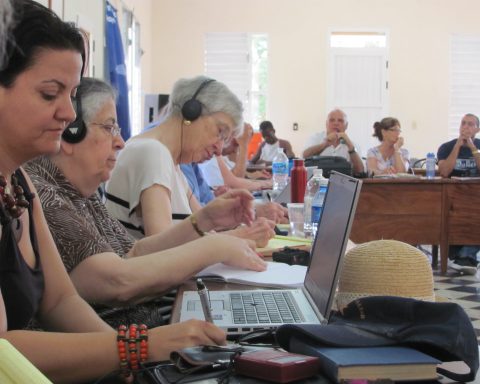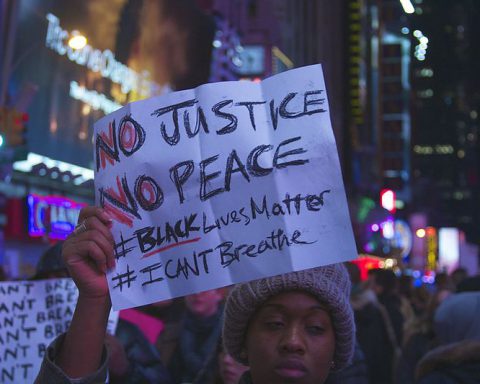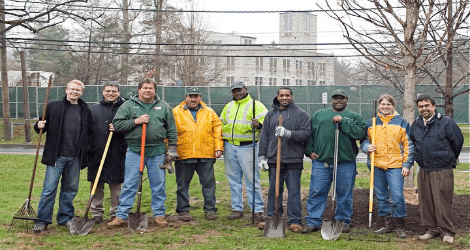Unpacking the narrative meaning of “justice” in
seminary life
An Editorial by Chris Iosso
 View and print as PDF.
View and print as PDF.

Patrick Heery’s editorial is the one that tells you what this issue of Unbound is about, and as a recent seminary grad he has worked with much empathy to learn what is going on in a set of fairly mainline and residential seminaries.
This piece is a defense of student “justice” concerns as part of the work of conflict and reconciliation vital to the church’s witness and credibility. The word “justice” itself is often shorthand for a story of liberation, like the end of Jim Crow or Apartheid, and not simply the good outcome of a court case. The word gets tangled in political correctness, but usually has something to do with good old power analysis. Seeking justice means figuring out why some folks make bad choices because all they’ve got are bad choices, and why others live behind high fences but have pretty low ideals. So here’s a case for student idealism in seminary life.
Context
Especially for second career or economically strapped seminarians, seminary is a costly time of preparation. It should be different from other academic institutions, it should have its own culture, a more intense introduction to the culture of ministry in the church. For those coming out of secular universities with little room for religious anything, the pleasure of learning from mature people of faith is certainly the greatest gift. And perhaps all seminarians are testing a possible new identity as a minister, which is quite different than other professions. Learning to share in the memory and character of the church requires new practices, and some of those are about how to live in a different kind of community.
So here you are, learning about the love and justice of Jesus Christ, praying with growing self-awareness, probably also commuting in and out of a field education placement on the weekends. There is a ton of reading. You are supposed to have enough security to explore your insecurities, but if seminary becomes your primary community, it can feel like a fishbowl. For young married couples with children, multiply the newness of personal change by two or more.
In this context, you are also supposed to learn how to help the church navigate the “isms” of a changing world. In one sense, the “isms” are some of the fallen “powers” of death that seek to destroy the church by compromising its calling: classism, racism, and sexism are powerful uniters and dividers. In another sense, the “isms” are our neighbors: the personal is very much the political when your neighbor’s new identity challenges your sense of what is right and healthy. Feminism is quite different than nationalism. And it’s often harder to deal with personal boundaries than with issues around the country.
Memory, Hope, and Relationships
If anything saved me as a card-carrying campus crusader, it was a sense of history. In the late 1970s, it was the fresh history of 1960s radicalism first, but for some professors it recalled the era of Revivalism and Social Reform: Nazarene historian Timothy Smith’s book about 19th Century evangelical social movements. Even though my professors were not generally as progressive as those in mainline seminaries today, they understood that the church had been and could be a force for change. Early exposure to a General Assembly also gave me a rich sense of the fullness of the church’s life and relatedness beyond the congregation. I had chosen my seminary partly through relationships in the first place, so going to seminary was placing myself in a historical progression.
But each seminary is also marked by the positions it has represented over time, and these help reveal how every part of the church is shaped by memory and relationships. Many of those positions were commitments to ideals, usually to defend or protect Biblical truth and transmit hope to new generations. When church and society may both not be doing too well, seminaries play a key role in the church’s counter-cultural resistance.
A chief lack of power for seminarians is their ignorance of the recent and longer-term histories of their institutions. A chief source of their power is hope, a gift of the Spirit that even jaded professors and administrators generally admire—which is good, because they are to teach even the tools that will challenge them, student cycle after cycle.
Institutions and Justice Narratives
Institutions may be movements that succeeded, but they are always adapting to new developments if they are to stay successful. Even as the loss of a middle class threatens middle class churches, seminaries often still have some resources and face dilemmas over their allocation. Scholarships, faculty salaries, building improvements… who has time to worry about foreclosures in nearby neighborhoods, degraded politics, a new war or the perpetual Israeli occupation of Palestine? How expansive an idea of justice can a seminary narrative include?
One challenge for the seminary is to make space for the social critique that involves self-critique, and another is not to try to coopt or too-quickly make friends with the would-be prophets. This is hard when the students and their organizations are not certain of tone or instruments to use. Then if other parts of a community are silent, the justice-oriented students can sound shrill or threatening as they echo off the institutional container, or administration. And certainly administrations and administrators can do some bone-headed things, and may not themselves have space to make apologies without legal liabilities. This means negotiation and informal feelers, even if the clarity of positions is threatened. Yet there are clearly times when institutions have to take stands and face inevitable disagreements.
It takes a pretty secure student, usually, to challenge an institutional practice and to organize to change it. That sense of security can look like self-righteousness, and if the student(s) don’t know their history, they misjudge their strategy. Within the church, there is always a higher ideal to which one may appeal. Once the appeal is made, of course, one has to live out the new practice with integrity, otherwise the new ism is fad-ism.
The “low fences” phrase in my title was meant to point toward the world that justice-oriented students usually wish to explore. How much difference do some of those field placements make? Are they self-serving, like some mission trips? Perhaps. But they also build relationships and memories and bring hope. Some essays in this issue reveal the influence of those field placements on vision and vocation. Sometimes they may even be that elusive “praxis” animal I used to hear about.
Perhaps the last four years in the United States have been about learning the distance between hope and change. As a servant of the General Assembly, and staff member of a mission agency, I also hope that there will be low fences between the seminaries and the denominational institutions—with our peacemaking discernment, ecumenical environmental work, and proposals to change economic inequality and distorted values. To the readers of this issue, especially seminarians: you are not alone in your particular struggles. Here’s to greater connections, and here are some fine examples.
__________________
The Rev. Dr. Christian Iosso is the Coordinator of the Advisory Committee on Social Witness Policy of the Presbyterian Church (U.S.A.) and the General Editor of Unbound. His Master of Divinity comes from Princeton Theological Seminary and his Ph.D., from Union Theological Seminary in New York City. He served as pastor of the Scarborough Presbyterian Church in Briarcliff, NY, from 1992-2005.Banner photo by Mihai Tamasila.






Unbound Social